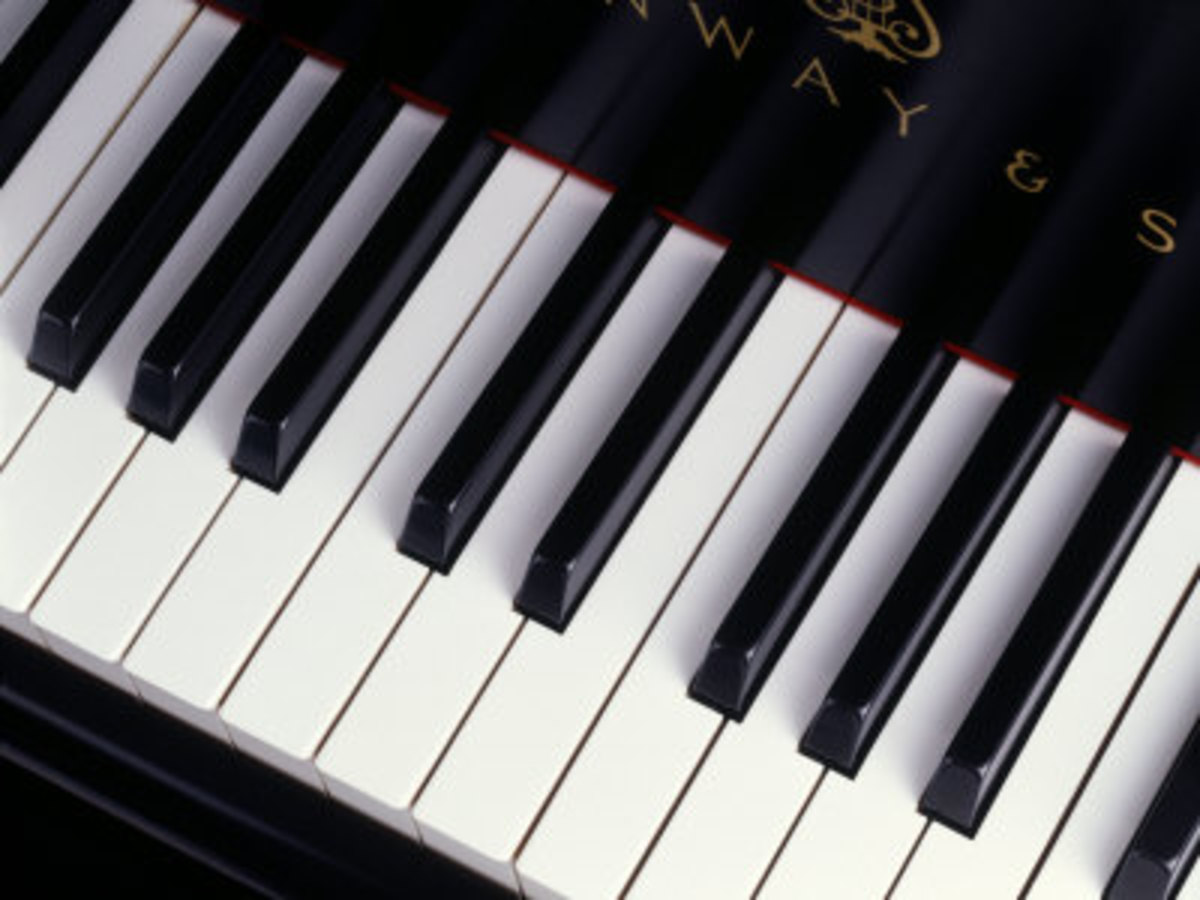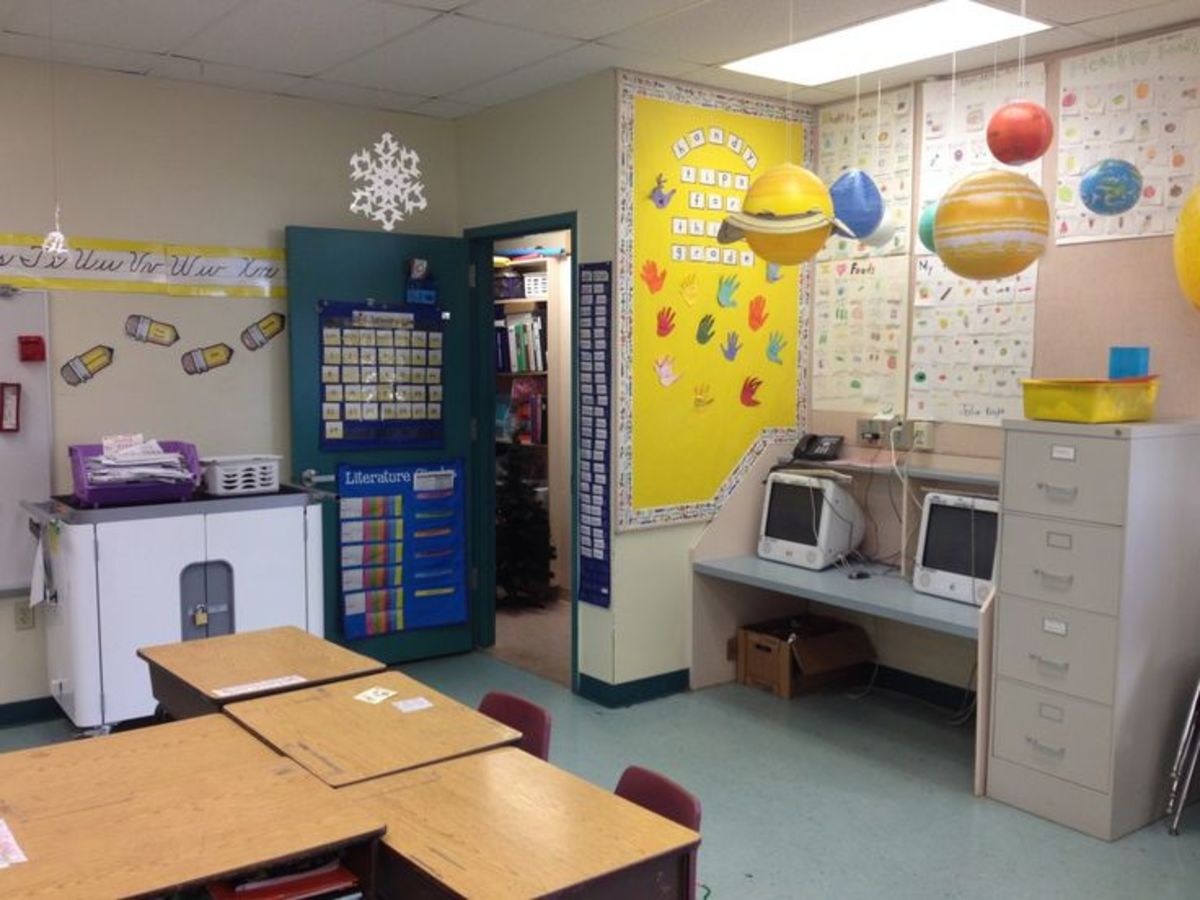Music in the Midwest: The Fugue of Music Programming and Curriculum in a local school system (1980s to 2010)
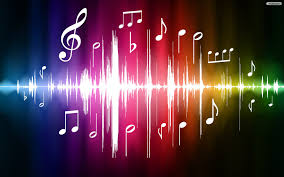
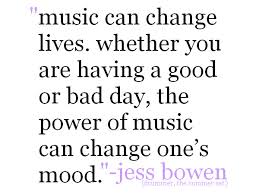
Music Gets Left Behind
Various studies have taken place throughout the years which show how music enhances reading comprehension, language acquisition and studies, and mathematics skills, and how it benefits the students in ways beyond academics. In light of these studies and the research that shows higher SAT scores in music students and the expert opinion of music educators who have seen the benefits of a solid music education, music education is taking flight, away from the standard curriculum in America’s schools. As the government enforces more accountability and laws in effect such as No Child Left Behind and Race to the Top, music education gets left behind and loses the race. The government demands that all students achieve, all schools make adequate yearly progress (AYP), and places limits on available funds to those schools who fail to meet requirements, attainable and unattainable. The limit in funds affects the curriculum as “arts” teachers are either laid off completely or take a change of teaching assignment, either teaching an arts course and an academic course or teaching music at two to three schools in order to maintain a full time status. If the program isn’t cancelled altogether, it is still lessened, shortened, and given minimal to no attention or funding. The focus on state standardized testing has also pushed music out of the spotlight, as teachers who may have taught a more well-rounded curriculum in an academic classroom embrace a new methodology of “teaching to the test” and leaving out the “fluff.” Music has lost its importance in the overall curriculum.
Introduction
The first time the idea of cutting the arts entered my conscious thought, I was a sixteen year old choral student at a large rural school in the Midwest. The giant ruckus amongst students and parents was the school’s discussion about cutting arts, and saving sports. Our football team had made it to State Championships several times, never winning, but they got there, and heaven forfend that any funding was removed from them! At the time, the high school had 2700 students, 2 choir teachers who taught 6 choirs and music theory, 1 band teacher, 1 orchestra teacher, several art teachers, a drama teacher, and a dance teacher. As a music student, I was up in arms about forfeiting my beloved music classes, but knowing my athletic peers would feel no sacrifice in their own high school careers. I loved to sing and if choir was cut, I don’t know how I could have faced each school day.
The elementary schools faced the cuts first, as art class was removed from the curriculum. The parents were so distraught that for a while, parents with minimal art background and qualifications volunteered to come in and teach art, so that art education could continue. Thankfully, the budget cuts did not affect the remainder of my high school experience and I was still able to stay active in choir and theater. Unfortunately, I pursued the arts in college and ended up teaching chorus and drama, where I once again experienced the fugue of arts education in our schools.
How This Impacts a Local School System
In East Allen County Schools in Fort Wayne, Indiana, the drift towards an arts-less curriculum is no different. As the economy pushes the arts to the background because of funding issues and teachers strive to teach to the state standardized tests and academics prevail in importance, music education, curriculum, and programming is slowly dying away in East Allen County Schools (EACS). By studying EACS School Board Minutes, newspaper accounts, and the contributions of various music educators and administrators, I will show the fugue of music education from a local Midwest school corporation.
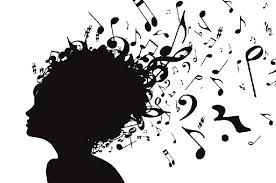
The Benefits of Music Education
In the 1980s and 90s, it seemed that a myriad of studies were being done to show how music increased SAT scores and made people smarter. Parents were rushing to stores to purchase Baby Einstein CDs in order to play Classical music to their fetuses or newborns. In my own studies as a music student and facing the potential of cuts in my high school music program, I was asked to write an article for the MENC Journal on a student’s perspective of budget cuts. I performed the research and found that there indeed were many resources to back up the claims that music was beneficial. The article also appeared in the South Bend Tribune’s “Next Generation Page” as a student’s voice on the issue that Penn Harris Madison Schools were in the process of discussion. Those articles are buried in almost seventeen years of archives and I wish they could be accessed; however, new research has been done in more recent years to once more show the academic advantages of a music education.
Neuroscientists have examined the benefits of a concerted effort to study and practice music…and they have found that music lessons can produce profound and lasting changes that enhance the general ability to learn….Studies have shown that insidious instrument training from an early age can help the brain to process sounds better, making it easier to stay focused when absorbing other subjects, from literature to tensor calculus. The musically adept are better able to concentrate on a biology lesson despite the racket in the classroom, or a few years later, to finish a call with a client when a colleague in the next cubicle starts screaming at an underling. They can attend to several things at once in the mental scratch pad called working memory, an essential skill in this era of multitasking. Discerning subtleties in pitch and timing can also help children or adults in learning a new language…Research of our brains on music leads to the conclusion that music education needs to be preserved.[1]
Yet despite science’s data showing this advantage in music education, for the past thirty years, administrators, school boards, and legislative types have been convinced that music is one of the courses that can be considered as superfluous when “trimming the fat” in their bulky budgets. East Allen County Schools is right on board with other American schools to find ways to circumvent an ever dwindling budget and finding that an easy choice lies in reducing and eliminating music.
[1] The Editors, “Hearing the Music, Honing the Mind”; The Scientific American, October 26, 2010
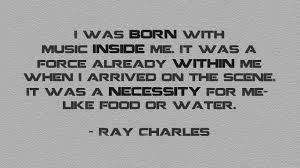
The Budget Crisis
In the 1980s, music was part of the core curriculum in East Allen County Schools. Elementary Schools each employed their own music instructor who taught music to all of the students in a 50 minute classroom schedule. Middle Schools and High Schools all had band and chorus teachers, strong programs, and some even had show choirs that competed. A budget crisis occurred and the school board struggled to find ways to meet the financial crunch. “Music, art, and PE were reduced by 50%”. [1] Teachers lost jobs, were reassigned, and some even began to share schools. Unfortunately with the on again-off again system that East Allen County Schools has employed in hiring and firing music teachers, many of the teachers do not have the years of experience within the district to know the full history and how it has impacted music education. The majority of the teachers who I interviewed have worked in EACS for eight years or less, and teachers who were teaching in the 80s have either retired, moved to other districts, or moved on to other career options. By the end of the 80s, East Allen County Schools was hiring more staff in all venues in their efforts to “Focus on the Future”, even though the School Board declared the “budget in emergency status” because of spending “more money during the current year than was set out in the budget adopted”.[2] More teachers had already been hired in all subject areas and school proceeded as salaries, insurance costs, and other expenses added to the financial turmoil.
In response to the 1989 report on the budget crisis, in 1990, the tendency to view lay-offs and reductions as an easy out continued to prevail. Seven academic teachers were laid off completely and three Music, three Art, four PE, one Home Economics, one Industrial Arts, and one Math/Science were put on reduced contracts.[3] The language in the School Board minutes was non-specific in identifying what exactly a reduced contract meant. Were these teachers laid off? Were they put on part time status? Were they moved to a situation of teaching in two different schools? It is unclear what exactly happened as the majority of the teachers affected in that time are either retired or have moved to different districts. A teacher of thirty nine years in EACS has seen the gamut of changes within the school district’s treatment of music education and programming. Music teachers lost their status as educators, no longer considered as teaching a worthy subject, they became referred to as “specials teachers”. Time in the classroom was reduced from 50 minutes to 25-30 minutes, a “minimum of minutes per contract”. Music has “gone from being part of the curriculum to delegated as giving classroom teachers their prep time”.[4] From a one school assignment, this veteran teacher was moved to covering two schools.
By the end of 1991, more cuts and reductions took place. Eight elementary, 4 four special education, four academic, two music, one art, and two PE teachers were eliminated completely. Five music teachers faced reduction as well as four guidance counselors, four elementary teachers, two PE, two Special Education, one Industrial Arts, and six general education teachers.[5] The district decided to focus primarily on academic preparation for college and careers. In 1994, the School Board embraced a new plan “Outcome Based Education” (OBE) and spent the year debating its merits, wanting to get rid of grades as a way of assessing student progress. Despite a lack of research, a lack of community support, and a lack of teachers being on board, the School Board pushed through with this plan, fighting at each meeting to prove it was worthy. An article in the Journal Gazette stated that the “trend towards no more grades and study showing 40% of students entering as freshmen to IUPU (schools) do not meet the beginning level requirements for entrance exams”.[6] At a February School Board meeting, 100% of parents, teachers, community members, and several students who spoke all opposed the OBE plan and baffled the School Board because of their lack of support. Almost all of those opposed argued that there was no data backing up the idea as being effective. The plan failed to take hold and the Board discussed more ways to make students successful. By the end of that school year, thirty two teachers received their letters of non-renewal and eleven received letters that they may possibly be reduced.[7]
The budget problem increasingly worsened. More teachers were cut, programs were shortened, budget allowances for programs decreased, and teachers had more students and less time to cover material. “Time has been reduced, so (I) have to really concentrate on what (I) want to get done”.[8] In 1996, the School Board released a new plan for the budget and how to redesign the curriculum to best support a reduced budget. Number 7 on their plan affected the performing arts. “It has been decided that for the 1996-97 school year only, direct special instruction in art, music, and physical education will be eliminated from kindergarten classes at Leo Elementary School. Special Area support will be made available to the kindergarten teachers in an effort to integrate this instruction into the regular kindergarten program”.[9] None of the teachers I interviewed were at Leo Elementary School when this redesign was implemented; however, in my own experience, I am fairly certain the kindergarten teachers were not thrilled to add music, art, and PE instruction to their already packed days.
[1] Retired 4th Grade Teacher, EACS
[2] EACS School Board Minutes, August 1, 1989
[3] EACS School Board Minutes, April 17, 1990
[4] Music Teacher, EACS (Dual Elementary Schools)
[5] EACS School Board Minutes April 16. 1991
[6] EACS School Board Minutes January 4, 1994
[7] EACS School Board Minutes April 12, 1994
[8] EACS Music Teacher
[9] EACS School Board Minutes May 17, 1996
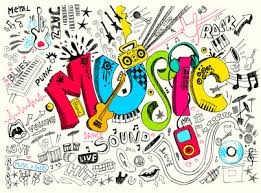
The Methodology/Curriculum Crisis
When I taught in Florida at a K-8 Arts School,[1] every year, our principal embraced a new program that was destined to lead to student success. One year, he had all of the academic teachers add the arts into their curriculums. He expected the math teachers to incorporate “math facts raps” into their daily activities, having the students rap various math concepts. He expected the social studies teachers to have their kids perform Readers Theatre plays to enhance their cultural understanding of various historical events. He wanted all elementary teachers to have 30 minutes of PE with their students each day, as well as mini-class plays and musical events. The academic teachers were not happy about this prospect and blamed the arts teachers for cutting into their important work time. Third grade teachers especially were under the gun for FCAT (Florida’s standardized test) scores to reflect student learning so that we could make AYP. They complained about each aspect of teaching art, music, theatre, and PE in their curriculums. It caused another division in a school which had already faced several divisive events affecting the teachers to look with suspicion and hostility at each other, instead of joining forces to benefit the children. The following year, we attempted to do a cross-curricular plan where the arts teachers were teaching material that enhanced the academic curriculum. For example, when fourth grade was learning about China, the dance teacher would teach Chinese dance, the art teacher would do something with Chinese lanterns, the music teacher would teach a Chinese song, and the drama teacher (me) would teach a Chinese play. This concept lasted about two months before it fell apart because of a lack of time for planning and a lack of materials out there to support every academic curriculum for every teacher. The following year, the arts teachers had to integrate academics into our curriculums which caused another distress as several resented the loss of their rehearsal time and felt that they were teaching out of their subject area or comfort zones. Arts integration and integration of academics into the arts curriculum only work if there is complete buy-in of all the parties present. We did not have that, and I am not sure if Leo Elementary had a complete buy-in of the concept in the 1996-1997 school year.
[1] Author, NFMAA, Music and Drama 2004-2008
Virtual Choir of Singers Around the World
The Resources Crisis
During the mid-1990s, along with kindergarten arts being cut and the elimination of teachers, schedules changed. Some Elementary classes were cut from 50 to 45 minutes and others were cut from 50 to 25 minutes. High Schools were on a “seven-period day”[1] and teachers saw their students every day for approximately 50 minutes. Schools were feeling the pinch of inadequate resources both for concert programming, instrument purchasing and field trip expenses. Teachers began to work double time as teachers and fundraisers, urging the community to give monetary support so that schools could repair instruments, buy new instruments, buy new music, and travel to competitions and educational performance experiences. A veteran teacher, who was and is at two schools, stated the disparity of resources in her two schools. One Elementary “has all the instruments and Orff[2] instruments and keyboards (and I) have 45 minutes at Leo. (It is a) nice facility. At (the other school), (I am in a) tiny closet of a room, no windows, no room to get instruments out, and (I have) only thirty five minutes (with students. It is) not a good situation”.[3] This disparity was also seen in a comment made by former music teacher Terry Fisher at a 1996 school board meeting. “When you look at the other schools in the district, they have at least two music areas…the equipment (here at Woodlan) is very old and should be replaced…the pay as you go[4] method would mean remodeling for an undetermined number of years (which) is not a sound practice for the education of students”.[5] Teachers had the same music books to use, but not an equal pool of resources to use. Some teachers had top of the line instruments and others had broken ones. And with the budget in the state that it was, there was not money to cover repairs or the purchase of new instruments. Unfortunately, music instruments are expensive! A band teacher shared that he spent $2000 a year to repair band instruments, and that didn’t include the money for new instruments and music repertory.[6]
In 2000, nine elementary schools were sharing five music teachers. In several school board meetings, parents voiced their displeasure with increased class sizes and teacher cuts.[7] “Woodlan parent Jayne Numbers expressed her concern that art and music teachers were shared among several elementary schools. She also expressed the hope that a $10,000 grant which was recently awarded to Woodlan Elementary School would be used in part to fund art and music programs”.[8] There is no response from the school board listed as to their approval or disproval of that grant money being used to help the music department. In 2001, the Indiana General Assembly released the “Proposed General Fund Budget Reductions” report to Indiana schools to address ways to deal with budget cutbacks. East Allen County Schools had a $3 million budget cut and the School Board met to determine ways to manage with less money. The Indiana General Assembly’s report suggested various cuts and the EACS School Board announced these cuts.
- Vehicles for administrative purposes ($12,000)
- Discretionary budget that wasn’t used last year ($10,000)
- Reduce literacy training ($18,000)
- Reduce Block assignment ($20,000)
- Reduce study table costs at middle schools ($30,000)
- Reduce 1 custodian at Park Hill ($40,000)
- Reduce head custodian supervisor position ($53,000)
- Reduce two custodians ($60,000)
- Cut two high school and one middle school counselor positions ($90,000)
- Cut one administrator ($110,000)
- Reduce two EAGLE (gifted and talented) teachers ($113,000)
- Reduce Special Services ($180,000)
- Reduce five secondary teachers ($250,000)
- Reduce eight elementary teachers ($320,000)[9]
It is interesting to note that in this 2001 report, music and other elective courses were not mentioned as being reduced or cut. I do not know accurately if this is because of a positive view of the arts and the arts benefits on students or because of parental concerns voiced to keep the arts, but based on School Board Minutes from 1986 to 2001, I noticed a consistent recognition of arts teachers and students, as well as other teachers in EACS. In those fifteen years, there appeared to be a level of respect and consideration for the accomplishments made by music teachers- from ISSMA[10] to Show Choir Competitions to other achievements made by both the teachers and their students. After 2006, that recognition dropped off, as did recognition for all teachers. The new School Board members seemed more focused on making AYP and balancing the budget than in honoring teacher success and maintaining a sense of accomplishment and morale amongst the staff.
Sometime during the late 90s and early 00s, the high schools switched from a seven period a day schedule to four blocks a day in a semester setting. I did not find an identifier for what year this change occurred, and the high school teacher who was willing to be interviewed could not remember the exact date. Four blocks a day increased the time teachers had to work with students. Teachers saw their students every other day for approximately 90 minutes. I began teaching middle school in 2001 on a four block schedule. Science teachers in my district (South Bend Community School Corporation) loved the longer classes because it gave sufficient time to complete lab experiments. Math and English teachers had mixed opinions as some of them felt they saw too much of their students in a day and some felt that the students forgot everything in the missed day from A schedule to B schedule. Others felt that they could accomplish so much more in 90 minutes. I was teaching music and found it frustrating to an extent because for middle school aged students, 90 minutes is too long for them to sing. Their voices are not mature enough or disciplined enough to maintain 90 minutes of healthy singing. I incorporated music theory, music history, music of other cultures, and various writing assignments centralized around music studies and met some resistance from students who were used to a class were singing was the only activity. The most frequent complaints were “Why are we writing in music class?” and “We’re not supposed to read in choir!” The State and National Standards for Music indicate that music teachers are supposed to cover singing, movement, interpretation, analysis, music theory, sight reading, music history and culture, music appreciation, various musical styles, music careers, and how to be an audience member. [11] I attempted to teach all of this much to my constant battling of wills with an unsupportive administration who knew nothing about music education and an unwilling class who struggled against change. That first year I had many factors working against me. Aside from the fact that my degree was vocal performance and not music education and so I had no knowledge of classroom management and lesson planning, I also had to deal with a recalcitrant population of youth in a building encompassed by staff apathy, discouragement, and despondency. I never was able to collaborate with the band or orchestra teachers, two people who were assigned to teach band and orchestra at three schools and were never available because their non-teaching time was spent in transit. The school board decided that since I was on an emergency license and an annual contract that it would be too much money to pay a mentor teacher to mentor me, so I had no first year mentor which all other first year teachers were assigned to. I was at the back of the building, away from any other teachers and I had no camaraderie with other teachers nor any knowledge of how to contact a parent about their child’s behavior, how to assess a child, and encountered not only an unsupportive administration that was overwhelmed with too many discipline referrals, but an unsupportive parent clientele from the poorest of neighborhoods. Add to this the staff meetings where mouthfuls of acronyms and terms I had never heard were spouted to a depth to which I could only become mired. Within those staff meetings, I was told my lesson plans (the ones I didn’t know how to write) had to incorporate reading comprehension, writing, and mathematics. The ninety minute block gave me time to add those academics to my lesson plans and through my own perseverance I was successful as a new teacher; however, it was in the midst of many obstacles and such. The four block day has its advantages and disadvantages to a music classroom. Despite opposition when the change is put into place, music and other teachers are able to adapt to a different scheduling system, but it takes time and energy to re-work those lesson plans and activities to fit into a longer or shorter class-time.
[1] New Haven High School Chorus Teacher
[2] Orff is a renowned music education tool- of instruments used to teach sight-reading, rhythm, and other musical concepts. Most elementary teachers cannot be hired in music unless they are proficient in the Orff methods and methodology.
[3] EACS Music Teacher
[4] Pay As You Go- the school board planned to renovate items as needed, even though the school (Woodlan) needed everything from ceiling to floor.
[5] EACS School Board Minutes May 20, 1996
[6] Anonymous EACS Music Teacher
[7] EACS School Board Minutes March 6, 2000.
[8] EACS School Board Minutes August 15, 2000
[9] EACS School Board Minutes March 20,2001
[10] Indiana State School Music Association (a vocal and band competition for middle school and high school students in both solo and ensemble performance)
[11] Indiana Department of Education, Music Standards
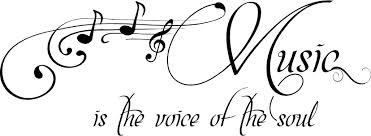
An Unbalanced Budget
In 2003, the School Board addressed the budget by discussing if year round school or a trimester schedule would be more cost effective. Schools were still in a budget conundrum as the “governor stated schools wouldn’t receive any increases in funding over the next two years or longer (and so) the Board will discuss its impact on EACS to figure out busing, schedules, contracts, or closing buildings”.[1] In an effort to maintain the programs already in place, a suggestion was made to eliminate the non-academic courses from the summer school program.[2] In April of that year, more teachers received their non-renewal letters. Despite the increase of letters sent out, Deputy Superintendent Novotny said that those teachers would “very likely…be hired back. The non-renewal procedure occurs every year and serves as a protective measure in working up staff requirements for the upcoming school year. Mr. Gordon commented that he was encouraged to see that despite budget constraints and events occurring in other local school districts, East Allen’s non-renewed list was the shortest it had been in several years”.[3] Sadly, with these non-renewals occurring in April, many teachers spend their summers looking for other teaching positions in and out of the county. Even if their position ends up open again in the Fall, those same teachers don’t always get hired back because they have already accepted other positions. Think of the detriment to the students with this inconsistency of teachers in their classroom.
The turnover of music teachers in EACS reflects the turnover of music teachers in other schools. It seems rare to find veteran teachers with many years of experience in the county. In the school where I taught in South Bend[4], the school had roughly fourteen choir teachers in seven years if I remember correctly. It had become legendary within my school for students to fondly reminisce about this teacher who walked out in the middle of “my Aunt Sally’s” choir class or that teacher who threw her keys at the principal and stormed out or the teacher who cried as she packed her bags or the teacher who called the kids horrible names as she grabbed her purse and left the students unattended. Sadly, it became the goal of some students to continue the legacy left by their ancestors to try to entice the teacher to quit. Without consistency, the students face a lack of consistency in their music education, yet each year EACS continues to fire and re-hire or reassign teachers.
In 2004, Dr. Abbott reported on the Subcommittee Efficiency Commission Report and stated that this change in public education needed to be studied by the school board so they could discuss how their schools could “do more with less money”.[5] Despite the school board’s desire to maintain the wealth of courses offered for students, the budget made more cuts necessary. Woodburn Elementary cut a number of specials and classes were overcrowded, reported a Woodburn parent. Dr. Abbott stated that reassignment of teachers was to “make assignments more equitable and balance class loads throughout the district” and that no teachers would be laid off.[6] No other music cuts were mentioned and during that school year, the focus seemed to be mostly on collective bargaining, funding and curriculum for foreign language programs, and the merit pay issue. EACS were “one of six Indiana school districts to be audited by the USDOE to determine NCLB compliance”[7] and (we) were the only Allen County district to may AYP.[8] High Schools moved to a five block day in a new trimester schedule. Music and other specials followed in the footsteps of athletic requirements and put a grade requirement for students involved in the arts, stating that “students who fail core subjects have to drop electives to make up courses”.[9] Failing students in middle school and high school had to drop music classes, leaving a smaller class size for some teachers. This smaller class size was and is a worry because if classes are too small, they run the risk of cutting that class altogether.
During this decade, a “pay to play” program was suggested. This program states that students who wish to take part in music courses need to pay some sort of out-of-pocket money to cover expenses. In chorus classes, this could mean paying $5 a semester to sing in the choir. The combined money would purchase music or outfits. Band students already pay an instrument rental fee for their instrument, but could have to pay more for their course. This seems like it could be a good plan, but the idea of a free education for all students, regardless of race or economic status flies out the window when music can no longer be part of that free education. I guess the question at hand is whether music is an important part of a child’s growth and development and if it enhances their academic standing in any way, shape, or form.
[1] EACS School Board Minutes January 21, 2003
[2] EACS School Board Minutes February 18, 2003
[3] EACS School Board Minutes April 22, 2003
[4] SBCSC, 2001
[5] EACS School Board Minutes November 14, 2004
[6] EACS School Board Minutes May 3, 2004
[7] EACS School Board Minutes April 20, 2004
[8] Ibid
[9] New Haven High School Choir Teacher
My High School Choir in D.C.
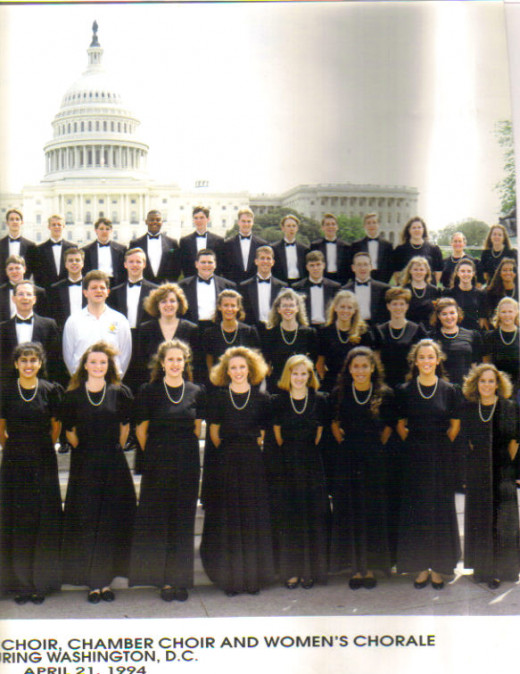
The Impact on Music Students and Music Teachers
I believe most music teachers would emphasize the benefit of a music education. In my own experience, I know that some students who would not come to school otherwise end up staying in school because of their experience in band, chorus, orchestra, or other electives like drama or art. Some of my students were very motivated to do well academically when they knew they could not be in a play, musical, or concert if they were flunking an academic class. Some of my students found chorus to be their only solace in an otherwise hectic home life and school life. “Music is food for the soul, the inner self. It completes who we really are and is in every facet of our lives. Without music, the world would be grey”.[1] Music education gives a “balanced view of life” as students learn “basic music skills and appreciation for composers and better music. It’s a life skill”.[2] Another teacher feels that music is a cultural commodity that needs to be passed on just like history and tradition.
“Music education is very important. We listen to music ever day, and the more we know about it, the more we can enjoy it. I teach with a 30 year plan in mind. I want my students to be able to sing lullabies and folk songs and interact musically with their children when they are 30. Elementary school is the only time students are going to learn this. It used to be part of the culture, parents and grandparents singing to their children, but now everyone stares at the TV, to the detriment of the musical culture in our country. I do my best to instill these songs (the ones I can fit in) in my curriculum so that children are able to participate musically in their families and with society”.[3]
An academic teacher shared how the reduction in recorders taught in the fourth grade has affected the band program because fewer students are prepared for band. Recorder prepares them to learn another instrument by teaching sight reading, note names, fingering and using the embouchures required for higher level instruments. Without exposure to the recorder in music class, they are less likely to know they have an interest in band music.[4] She also stated that “one year I had a student who was a severe stutterer. Music was the area where when she was singing, she didn’t stutter. She was also in her church choir. What joy was seen on her face as the words flowed out of her mouth without facial contortions”.[5] Both in mine and in other music teachers’ experiences, it seems that music is a class that gives students a chance to shine, a chance to overcome obstacles and challenges, and a chance to create something beautiful. “A survey of secondary school administrators indicated that principals believe that music classes and ensembles are a powerful motivator in keeping kids in school and persisting to graduation – two important goals identified by our state’s education leaders.”[6] This year, I am observing an elementary music classroom for my Teaching Elementary Music Methods course, and one of the first grade classes has two special needs students in it. Both students have various levels of mental retardation and in music class, they are able to communicate through song. I have witnessed non-English speakers who are able to use music class as a catalyst to fit in, to socialize, and to learn English. I have seen students grow in confidence and self-esteem. Music has such a positive effect on many people.
The values of music education go so much farther than just being able to perform the next concert or show with as much excellence and technical accuracy as possible. It is about building relationships, learning to work with a group of people that you would not normally work with, understanding your role within that group and giving your best effort no matter what happens to you. It teaches students to have an escape other than playing video games, yelling at siblings, parents, friends, and teachers. Realizing that there is something out there besides what’s happening in their lives, and that they can accomplish anything if they just put their mind and efforts towards it…Music can become a career choice, a hobby…and 90% of the memories that (students) have from being in band, choir, or drama will always be something positive. Music and the arts impact people in many positive ways!”[7]
According to Rusty Briel, executive director of the Indiana State School Music Assocation, “Music… is one of the few areas within a school curriculum that utilizes left and right brained learning activities at the same time… It has such profound and positive effects upon the total learning structure for the child”.[8] Tricia Clark, elementary music teacher in Indianapolis public schools stated: “There’s so much research that supports how music affects a lot of learning areas, like learning math and language...There was language touched on here, and math, with division of beat. There was mathematical thinking, musical thinking, kinesthetic body movement—it’s kind of an all in one package that, in other subject areas, you just don’t get all that”.[9] These are just a few testimonies of music teachers who have seen the many benefits that music can have on a student.
[1] New Haven High School Chorus Teacher
[2] EACS Elementary Music Teacher
[3] EACS Cedarville Elementary and New Haven Elementary Music teacher
[4] Retired EACS Fourth Grade teacher
[5] Ibid
[6] IPFW Music Professor
[7] Anonymous EACS Music Teacher
[8] Carly Everson, “Schools Fear Budget Cuts Spell Sour Note For Music”; The Journal Gazette, February 28, 2010
[9] Ibid
Choir as an Adult
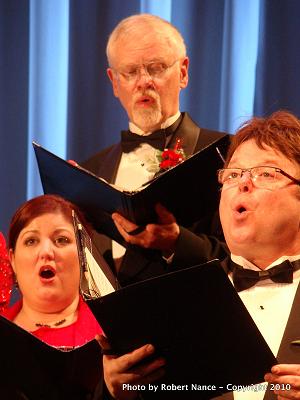
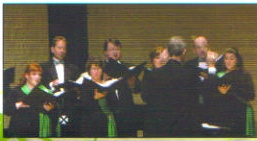
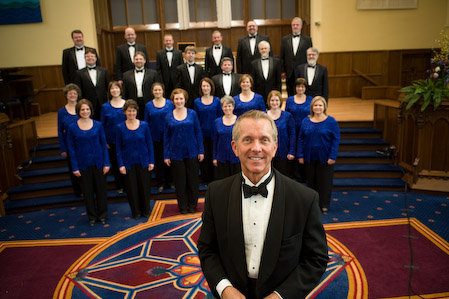
All Musicians Left Behind
Walking through the next several years of School Board Minutes, recognitions of music teachers and academic teachers have decreased and eventually stopped altogether. Grants each year were awarded in all areas except for music education. The format of the minutes changed so that they were harder to read and had less, if any, details. For example an August 2009 meeting says “Budget Report” under areas of discussion, yet there is no copy of the budget report, nor any comments made by board members or those community members in attendance. A November 2009 meeting minutes stated “2009 reductions will be discussed” and had nothing listed or attached to indicate what was discussed. I found a lot of information on busing, special education, and ESL programming, but nothing on music in 2009. In 2010, the same lack of detail ensued with budget cuts mentioned, but minimal information given. In the “Reduction Process Report”, potential cost items were mentioned as needing discussion. Kindergarten, electives, guidance, resource teachers, support staff, travel, field trips, insurance, ESL, and Vocational programs were all on the list.[1] The Indiana Department of Education suggested a hiring freeze and a freezing of salaries as well as rolling back salaries to the previous year’s level and eliminating non-instructional employees. The IDOE also suggested larger class sizes, consolidating schools and outsourcing certain jobs.[2]
Schools across Indiana were facing the same budget crisis and the threat of music cuts. Governor Mitch Daniels ordered that $300 million dollars needed to be eliminated from Indiana schools.
School officials are taking a hard look at staffing, benefits, and programs as they try to meet this mandate. Administrators…have already cut budgets to the bone…The Monroe County Community School Corporation voted to eliminate its elementary strings program which feeds into the Hoosier Youth Philharmonic. The Tippecanoe School Corp. decided this week to cut half its elementary art, music and physical education teachers to close a portion of a $7.8 million shortfall.[3]
Schools in the Fort Wayne area were not exempt from this trend. In March, EACS was facing a $4 million reduction in finances and a meeting was held to discuss ways, once again, to handle the deficit in funds. Items on the agenda included health insurance, reducing substitute salaries, having parents pay for full-day kindergarten and for summer school, eliminating more para-professionals, reducing the use of certain supplies, and making extra-curricular activities a “pay to play” plan, where students would have to pay to be involved in music classes and certain other electives.[4] At the end of March, the School Board voted to close Monroeville Elementary and to change from trimester to semester scheduling. They decided to “restructure” specials, yet no details were given as to what that restructuring would entail. They decided too that no stipends “for any course taught during the school day except High School marching band” would be given, meaning that there would be no money given to teachers who directed after school, evening performances, concerts, musicals, or field trips for competitions and other performance-based endeavors. Several of the music teachers in the county have decided to eliminate any of their after-school activities in protest of this stipend cut. Others are continuing on as best they can. “The Choral stipends fund our activities after school. Therefore, we do nothing after 3:15 p.m. I plan to do concerts during our school day (but) this won’t help the parents who have jobs”.[5] The Board also decided to eliminate some athletic coaches and entire sports teams, to replace librarians with para-professionals, to cut membership dues for teachers in various professional organizations, to increase class sizes again and to cut 12 more paraprofessionals and 10 more teachers. They also offered a retirement incentive program to encourage teachers to retire earlier.[6] In June, the School Board discussed redesign options and decided to make Heritage Junior/Senior High School the Humanities and Fine Arts Magnet. In October, this plan to redesign passed and discussions moved to how to implement this new designation for magnet programs at the various schools. Currently, EACS are in the process of executing this new plan.
Music education is still considered important to teachers and administrators on some level and although the budget has a huge impact on how much money can be spent on music classes, EACS music teachers are trying to do the best with the limited resources that they have. Most teachers agree that the curriculum has not changed, as they still use the same music textbooks and the same methods are still effective for teaching music concepts. The curriculum has mostly been affected by the cut in the time teachers have to teach the students.
Music teachers are faced with a choice: make it work with what you have or make the kids pay for decisions that are out of your control. What has changed for me is the way I have taught. More and more, I cannot teach in an authoritative manner as I was taught as a student and as a student teacher. (I) have to come down to the kids at their level and help them understand why music has something to offer them other than video games, drugs, and alcohol.[7]
Another teacher feels that “with less time and fewer resources, we are still expected to give students a well-rounded education that meets or exceeds state-mandated standards. Change is more to do with funding than anything else at this point.” [8] The same material is still covered in most classrooms. “I just can’t go as far with lessons. I don’t have time for many divergent lessons anymore…and the kids suffer”.[9] The curriculum has not changed, but the time allowed for deeper study has been cut and therefore, the quality of music education may be drastically affected as more and more time is eaten up by budget cuts and such.
The need to make AYP and comply with NCLB has brushed a handful of teachers. Most elementary teachers have been allowed to keep their curriculum static as they have such limited time with their students, but middle school and high school teachers have encountered the necessity and dictum made by principals and the district to incorporate academics into their arts curriculum. New Haven High School’s choir students work on problem-solving and writing assignments and “all subjects to help improve test scores.”[10] “Schools emphasizing test preparation are likely to devote most of their curriculum budget to test prep materials rather than the enriched resources students need. In focusing on test preparation, schools are likely to reduce or eliminate subjects that are not being tested, including the arts and sciences”.[11] Adding other subjects into an already full curriculum requires arts teachers to become creative in finding ways to include subjects they may not be entirely comfortable with in their lesson plans. This cuts into their planning time. Their time is affected, their resources are affected, and the budget, as always diminishes to almost nothing.
This cut in budget, as mentioned before is affecting teacher’s wallets. The teachers I interviewed all admitted to using their own money to fund various activities and lessons, in hopes of enriching the educational experience. One teacher stated “I haven’t gotten any less money for instruments or music, because I have never gotten any money” however, she admitted that her principal has taken money out of his discretionary budget to cover music purchases.[12] A band teacher discussed the creative ways he has had to balance multiple accounts to cover multiple band needs and how the budget cuts are drastically affecting his, and others’ programs.
This year, they have pulled my funding away to purchase music which has hurt us tremendously as well. I cannot keep updating our library if I do not have the money to purchase music for the band. Most elementary schools do not even have accounts to purchase music or instruments for their classes. Teachers buy their own stuff so that the kids can have a meaningful experience…Music is taking a back seat to “getting more time in the classroom to prepare for student testing”, direct(ly quoted) from EACS.[13]
Other changes in the curriculum and programming of music classes entail the inclusion of special education and non-English speaking students, and principals grasping at various teaching methodologies and strategies, and strongly suggesting that their music teachers incorporate these strategies into their lessons. Teachers have felt frustrated in how to incorporate ever-changing strategies into a curriculum that has already been a fairly successful method for teaching music.
For me, I think the biggest struggle starting out was trying to understand how to relate a corporate initiative to a music classroom. For instance, my first faculty meeting was overwhelming. We had a lot of staff members who did not like our principal and frankly argued and did not listen to anything he was trying to tell us. They kept talking about benchmarks, AYP, ISTEP, and Core 40 stuff. I was so confused. Once I realized that much of it didn’t have anything to do with me, I was a little more at ease. (But) then we moved to Project Based Learning and Career Majors…then we moved back to AYP and making improvements for our School Improvement Plan. I’ve had (in seven years of teaching) three principals and three superintendents since I started at East Allen…We’ve never been consistent with anything, and we’ve been in a constant state of flux as long as I can remember…the struggle for me has always been how does teaching music fit in with the school’s community, and how can we continue to fit in if things keep changing on us?[14]
One elementary teacher shared that “with increased pressure from No Child Left Behind to make sure all students pass standardized tests, music is no longer just about music. We have to make sure we include more activities that include reading comprehension or math skills. Student behavior has also changed to reflect this added pressure, which makes teaching difficult at times”.[15] She felt that AYP and NCLB absolutely affected her curriculum as “I include math, language arts and science…Music can be integral to success in other academic disciplines.”[16] Our veteran teacher said her curriculum hadn’t changed, but she witnessed how elementary teachers did not have the time in academic classes to do the “creative things” they used to do. And of course, the biggest change in programming would be this recent cut in stipends which will end performance opportunities for the students of teachers who have decided to not have any programs in protest.
I feel one of the biggest mistakes that East Allen has made is yanking the extra- curricular funding to pay all of our middle school directors and high school choral directors. Different directors have done different things with this cut in pay. For the record, EACS has stated that the reason that these teachers’ salaries were cut is because they do not teach outside of the classroom, (but) that is not true. Most of the choir directors have chosen to not do any concerts that are not during the school day. One band director I know is still having his fall and spring concerts, but that’s all. He had been doing a middle school pep band and several other community activities that he has cut because he isn’t getting paid to do them anymore. It’s sad to see, and I hope they choose to reinstate the stipends again. In the end, it’s the students and their families who are suffering because of this, the teachers are feeling it in their wallets, and feel if they make it work, that they’ll never get their pay back.[17]
In several interviews and in various School Board minutes, it was clear that music teachers pay a good amount of money out of their own pockets to finance their music programs. The stipends really don’t make up for the amount teachers spend, but they do provide a nice incentive to continue after school activities. Most music teachers I have encountered have about four concerts a year, plus two to three ISSMA events and several community activities whether tours or competitions. Several accounts in the school board minutes gave kudos and honor to music teachers who donated money to their own programs or bought items out of their own personal finances, but really, at the low salaries that teachers receive, it seems the additional financial burden of using their own money is additional an additional weight they shouldn’t have to bear.
Other changes that music teachers have encountered are shorter planning periods, larger class sizes and the challenge of moving from one school to another during their work week. “The budget cuts definitely affect music education (as) there are less teachers and we are stretched thinner. They squished my schedule so full so that they didn’t have to hire another teacher. The high school band director come(s) over to teach two of the classes because (they don’t) fit into my schedule. I have 1100 students a week, and very little chance to get to know them”.[18] A retired fourth grade teacher remembers when the redistribution of music teachers was first discussed. “It was the administration who made the suggested cuts to the Board. The number of schools per load would have been three, but the union kept it to two.”[19] Another teacher also supports the statement that the administration was behind the decisions to cut music, but shares a different experience.
I had originally been teaching at four schools (seven years agao), but that was because of fifth grade band. My lunch hour was basically spent on the road (to) teaching band classes across New Haven… We were told last spring that (band) was cut, and then the day before school started all EACS directors were told that fifth grade band had to be taught before or after the school day. Well, that put almost all of us in a pickle, so some teachers worked it out with their principals, but I was told that I had to teach General Music (something I have never taught before) at two different elementaries. So now, I have to be at two schools on Monday, fifth grade band from 7:30-8:00 a.m. on Tuesday and Wednesday, two schools on Thursday and Friday with no prep. I also have Tuesday and Wednesday with a block of time from 8 a.m. to 12 p.m. with nothing to do. I’m at (the) high school every afternoon. It’s frustrating and really draining, especially on (the days) I get no break. I have a new appreciation for prep time, that’s for sure. The sad part about it is that I can’t focus on just the band for a performing group. I have to focus on my elementary groups as well and instead of being 100% focused on the band, I’m 50/50 if that on all groups. I went from just three concerts…to nine concerts! (Add) marching band….High School Pep Band, Winter Guard and Winter Percussion Events, I’m ready for the year to be over now, and it makes me mad that I am![20]
All of the elementary teachers are at two different schools this 2010-2011 school year and are feeling the crunch of less time, bigger classes, and no budget for instrument purchases or repairs.
[1] EACS School Board Minutes January 19, 2010
[2] Ibid
[3] Carly Everson “Schools Fear Budget Cuts Spell Sour Note for Music”; The Journal Gazette, February 28, 2010
[4] EACS School Board Minutes March 9, 2010
[5] New Haven High School Choir Teacher
[6] EACS School Board Minutes March 30, 2010
[7] Anonymous EACS Music teacher
[8] Highland Terrace Elementary and Meadowbrook Elementary Schools Music Teacher
[9] Cedarville Elementary and New Haven Elementary Schools Music Teacher
[10] New Haven High School Choir Teacher
[11] David Hursh “Assessing No Child Left Behind and the Rise of Neoliberal Education Policies”; American Education Research Journal, 2007
[12] EACS Elementary Music Teacher
[13] Anonymous EACS Music Teacher
[14] Anonymous EACS Music Teacher
[15] Elementary Music Teacher
[16] Ibid
[17] Anonymous EACS Music Teacher
[18] Elementary Music Teacher
[19] Retired Fourth Grade Teacer
[20] Anonymous EACS Music Teacher
One of the Choirs I Taught
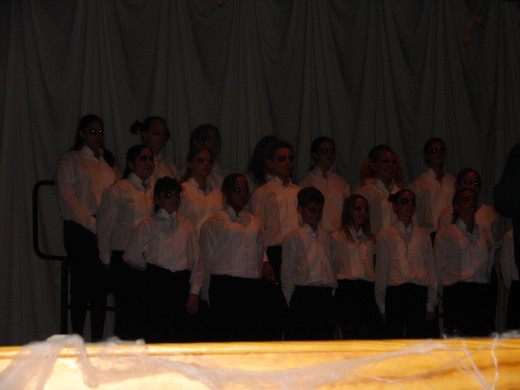
Conclusions and Solutions
It is unfortunate that with the benefits that music education provides, supported by various research and studies, that music is considered an expendable subject in any school setting. The IMEA (Indiana Music Educators Association) “believes that the present funding crisis in Indiana education threatens to deal a devastating blow, not only to schools and teachers, but to the quality of life in communities across the state….For over 100 years, Indiana has been known to be on the nation’s leaders (in music education). An outstanding music program helps schools achieve excellence, supports the quality of life in the community, and helps out citizens achieve a balanced education”.[1] IPFW Music Professor and President of the MENC (Music Educators National Conference) Indiana Chapter stated in a letter to Indiana School Boards the many benefits of a solid music program. In her passionate appeal for a reconsideration of budget cuts, she made several points in the defense of not cutting music from curriculums.
Participation in music activities actually rewires the brain, often enabling the brain to perform other learning tasks more efficiently. While researchers are hesitant to identify a cause-and-effect relationship between music activities and test scores in other content areas, there is irrefutable evidence that the focused attention needed to perform music does have an impact on cognitive processing. Music making…develop(s) the important 21st century skills of creativity, critical thinking, self-direction, personal communication and teamwork. (Music) educate(s) the whole child. Strong schools make for strong communities, places in which potential businesses and homebuyers choose to invest. Diminishing the quality of your schools by restricting access to music education can have a crucial economic impact on your community. [2]
In looking at the impact of failing schools, the necessity to make AYP to comply with NCLB, the desperation to pass state tests, and the finances that seem to rapidly be decreased, schools are finding that cutting time in the music classroom seems to be the wisest choice. Despite the academic and social benefits that music education has on students from early childhood to high school, East Allen County Schools has decided to spend their budget in areas other than music. While reviewing 20+ years of School Board Minutes, I was astounded by how much money it takes to run a school corporation. I wondered how I might do things differently. In every meeting, the School Board, as per their policy had to approve or disapprove numerous purchase requisitions and costs. In 2009, $983,000 was spent on health insurance! Now, as a teacher, I would be the first one demanding that my health insurance was paid 100% by the School Corporation because frankly I don’t want to pay it out of pocket. Yet, in Florida, in Lee County Schools where I taught with 20,000 people on payroll, in 2008, the District faced a $37 million budget cut and found that insurance was one of the major contributors to that deficit. In EACS, it seemed that a majority of the purchase requisitions were from the lunchrooms. This school needed a walk in refrigerator and that school needed 10 new bread pans and although I did not do the math on all of those expenses, it did seem that they might add up to a considerable expense. In the lunchroom, if one added the costs of lunch staff, food, cooking materials, and the additional electricity that lighting, refrigeration, and heating make on the utilities, I think one would find that it was a huge burden on the budget and could be considered as superfluous. Off topic, I understand that Title I schools have their free and reduced lunch programs and that some kids do not have access to three square meals a day, but school lunches pack 1100 calories in one meal, adding to our nation’s obesity epidemic. Cutting lunchrooms and all they entail may be a great way to address the budget. Kids can return to lunch pails and brown bags, and a discretionary budget for cheap bread, peanut butter, and jelly can be used to feed kids who didn’t bring their lunch to school. Busing is another huge expense that might be addressed. The School Board Minutes also showed significant funds being poured into professional developments, trainers, clinicians, and other “experts” brought in to provide greater insight. I think that looking at the budget as a whole has a lot of merit and that cutting music arbitrarily is not a wise decision in the long run. I would urge East Allen County Schools to re-evaluate their budget, the success of various programs, expenditures that may be unnecessary and to re-think how they spend their money in ways that best benefit the child as a person and a scholar.
[1] IMEA Online Newsletter, April 2010
[2] Dr. Barbara Resch “Letter to School Boards Regarding Budget Cuts”, IMEA Online Journal, February 4, 2010
Primary and Secondary Sources
I.
Five active music educators, 1 elementary teacher, and 1 retired music educator were interviewed
(No administrators were willing to respond to my calls for an interview)
II.
http://www.eacs.k12.in.us/ East Allen County Schools website
East Allen County Schools School Board Minutes 1980s to 2010
www.menc.org Music Educators National Conference organization’s journal
http://www.imeamusic.org/ Indiana Music Educators Association website and journal articles
http://www.journalgazette.net/ Fort Wayne Newspaper articles
http://www.news-sentinel.com/ Fort Wayne Newspaper articles
www.scholar.google.com various Publications on music curriculum
http://www.doe.in.gov/ Indiana Department of Education website



